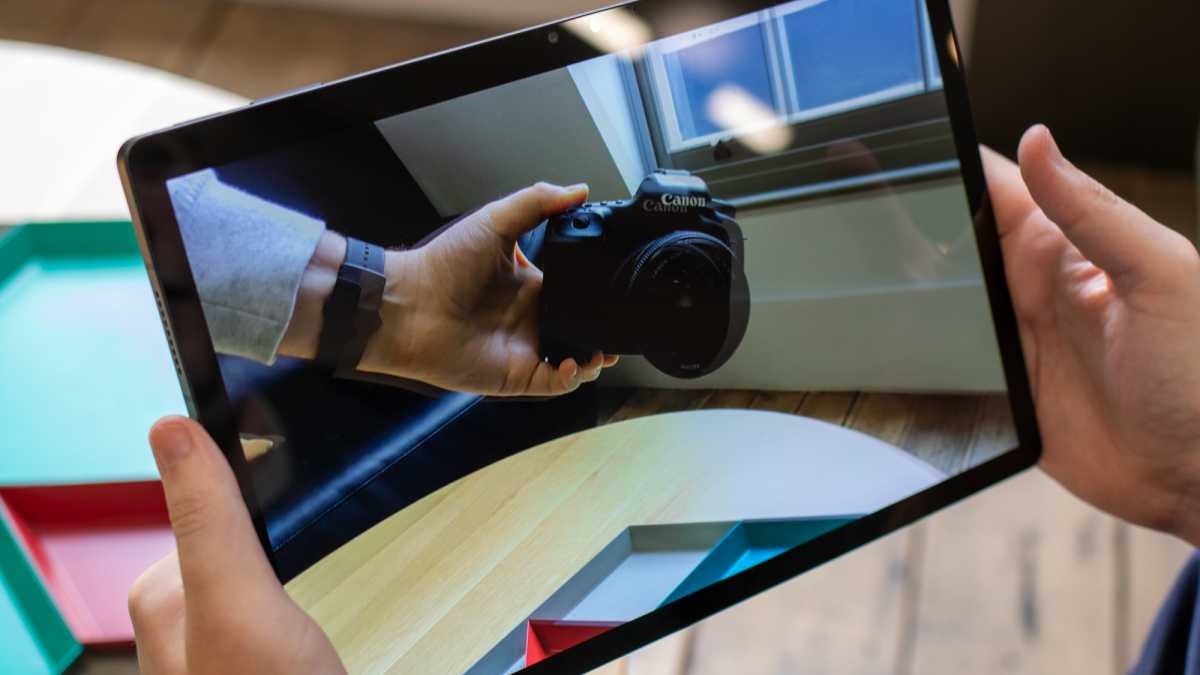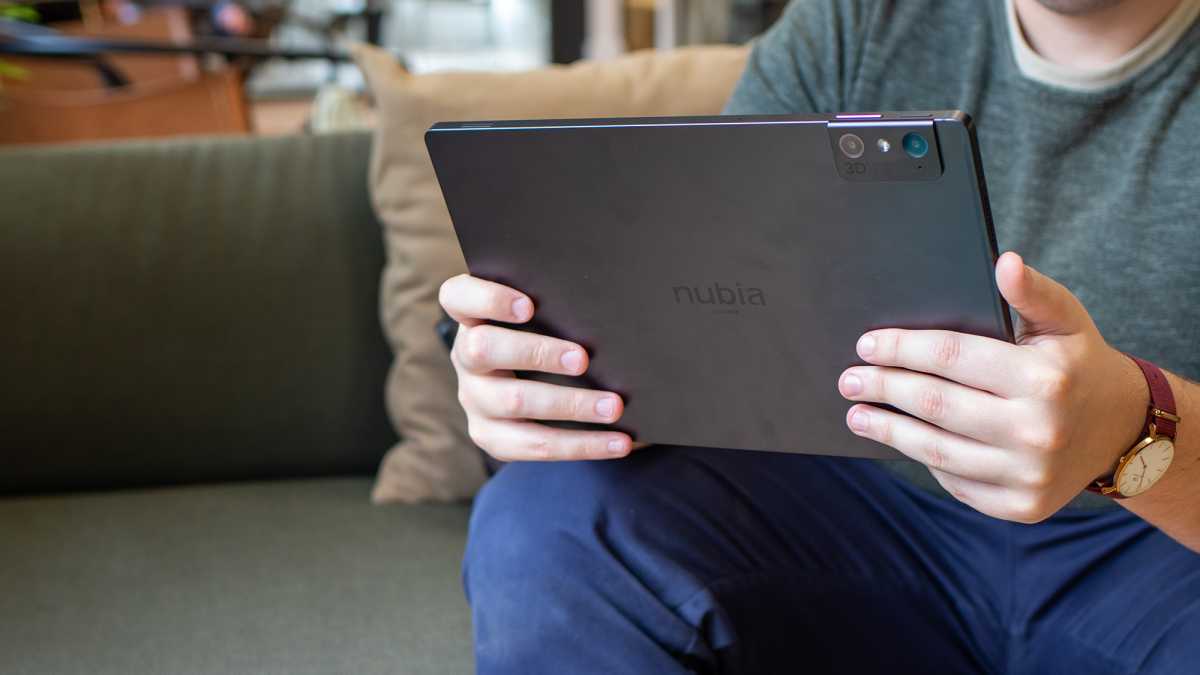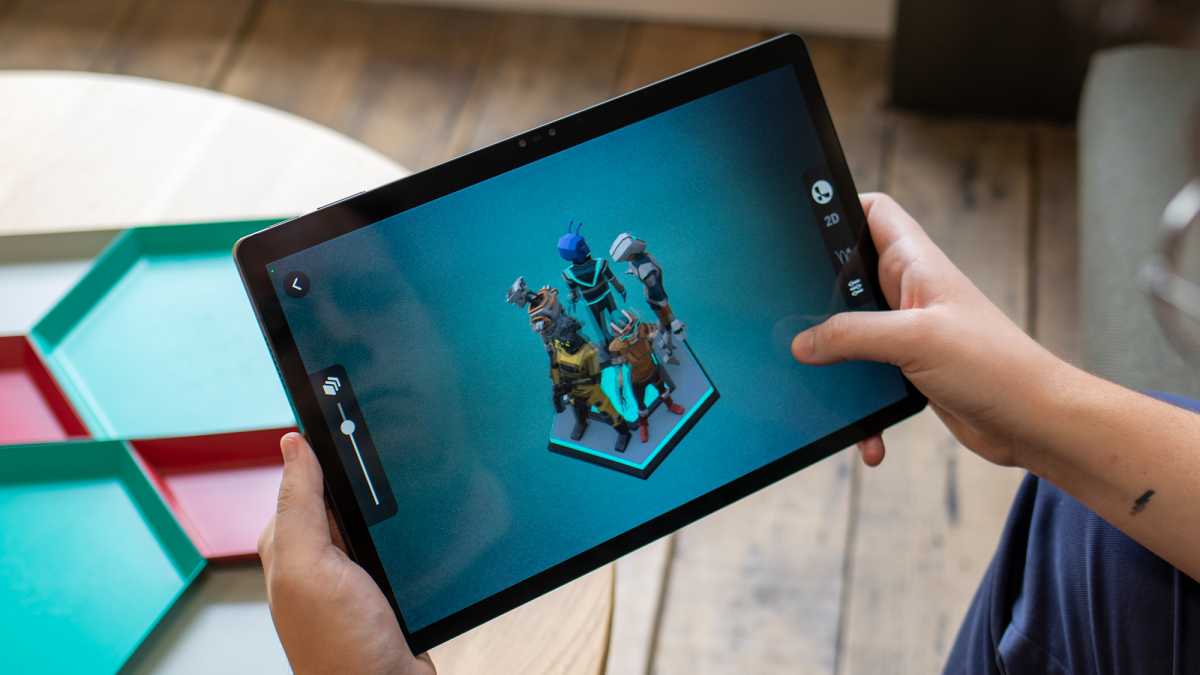ZTE’s new 3D tablet is a curiosity you shouldn’t buy
I’ve been using an expensive Android tablet from ZTE with a 3D display, and it is one of the oddest products I’ve ever tested.
It uses 3D technology similar to the Nintendo 3DS to create a ‘glasses-free’ 3D effect to images and videos.
Confusingly, the Nubia Pad 3D is also sold as the Lume Pad 2 from a company called Leia Inc. The box I received the product to review in was Leia branded and said ‘development platform’ on the side.
If the Nubia Pad 3D is indeed meant for developers, or professionals or enterprise use, then perhaps I understand – after all, that’s the approach that both Acer and Asus have mostly taken with their recent 3D-enabled laptops. But ZTE has decided to sell this big, bulky, buggy 3D screen tablet to consumers for $1,199/£1,149.
That’s more than the $1,099 M2 12.9in iPad Pro in the US, and not far off Apple’s £1,249 UK price. It’s hard not to compare the two and conclude that while 3D is fun, that really is where it ends for the tablet buying public.
Dimensionally challenged
The main draw of the Nubia Pad 3D is the 3D-enabled apps that only this device can run. Just to confuse some more, these are all Leia branded: LeiaChat (3D video calls), LeiaCam (take 3D photos and video), LeiaTube (converts videos into 3D), and LeiaViewer (view 3D models).
LeiaViewer is the most impressive of these apps as it is where the 3D works best and with little to no blurring. There were pre-installed 3D models on my review device that were fun to play around with, and if you work with 3D models you can import them into the app to view in 3D on the screen.

Henry Burrell / Foundry
I span an animated model of a mini city around, closely studied a leather shoe, and observed a rendering of a mythical scene played out in statue form, but to what end? 3D viewing does not add any function above a 2D display – professionals design 3D models on 2D displays all the time. Being able to view in 3D is cool, but it doesn’t add utility.
The 2560 x 1600 IPS LCD screen cannot display a 3D image, per se – the technology works much like it does on Nintendo’s old 3DS handheld, where the screen projects a different image to each of your eyes and uses the dual front facing cameras to track where your eyes are, creating a 3D illusion.
The screen’s 120Hz refresh rate ensures animations from menus and in 3D apps are smooth and slick, and most of those apps allow you to toggle between 2D and 3D thanks to the screen tech.
But with that large display, four cameras, four speakers, and a big battery, this is a thick and heavy device compared to the best tablets out there.
It weighs 780g, considerably more than the 684g 12.9in iPad Pro, and despite the difference does not feel far off the 1.29kg M1 MacBook Air I use every day for work. For a tablet on its own with no keyboard, the Nubia is weighty.
It’s also thick at 8.4mm, thanks to an additional layer underneath the display to achieve the 3D effect, which adds to the thickness of the device – the iPad is just 6.4mm.

Henry Burrell / Foundry
I’ll leave the iPad comparisons alone now as I know ZTE is not trying to clone the Apple tablet here, but this is a stark, heavy tablet with rounded off corners to the frame but not the display, which is rectangular.
You have to hold it in landscape and view 3D content very head on. Turn it off the correct axis and the images or video break into splintered, blurry chaos.
Limited appeal
One of the tricks the tablet can perform is converting existing 2D videos into 3D using the LeiaTube app. It’s branded as though you might search all of YouTube and pick any video, but the limiting reality is it presents you with a grid of YouTube and Vimeo videos and no search function.
You can sort by category, and I soon discovered there are not many videos you can watch or convert. Even when you do, it’s like a proof of concept on a tablet that feels like a prototype.
This is not good 3D like you may have seen with 3D glasses at an IMAX cinema, or indeed in the LeiaViewer app. This is iffy glasses-free 3D. The videos look better in 2D.
I took photos using the LeiaCam app and got similar results – images that looked solid in 2D and then had ghosting on the outlines of objects when the tech tried to render the image in 3D.

Henry Burrell / Foundry
The Pad 3D runs the Qualcomm Snapdragon 888, a 5G-capable chipset that you can take advantage of thanks to the SIM card slot. The 888 debuted in 2020, so it’s a bit irksome that a $1,000/£1,000+ tablet in 2023 is using it. The Xiaomi Pad 5 uses the Snapdragon 860, a chip not far off the 888’s capablities, and only costs £369.
That said, most things I did on it chugged along just fine, and it didn’t stutter when playing back 3D video or converting images into 3D.
There’s also the 3D video calling app LeiaChat, but I couldn’t test this because it only works fully with other Nubia Pad 3D tablets. ZTE says you can chat with people on iPhone and Android using the LeiaChat app, but at the time of writing this was not in either the Apple or Google app stores.

Henry Burrell / Foundry
Despite the relatively unique technology it packs in, I can recommend the ZTE Nubia Pad 3D to precisely zero people who have this much money to spend on a tablet. The iPad Pro (or any iPad for that matter) is a better buy for everybody with over a grand to splash out, or if you must have Android then the Samsung Galaxy Tab S8 is a comparative steal at $699/£649.
The only possible reason I can see for you to buy the Nubia Pad 3D is if you want to develop an app for its 3D technology, which has limited practical use for consumers in the first place. I thought we worked this out a few years back when the popular Nintendo 3DS was considered a curiosity.
I owned that console, and I turned the 3D off. A decade later, I turned it off on this tablet too. File the Nubia Pad 3D under ‘curiosity’ and move on.
Related Posts

Technical Analysis: 4 Stocks with signs of death crossovers to keep an eye on

HDFC Bank & 3 other fundamentally strong stocks trading above 200 DMA to keep an eye on

Falling Channel Breakout: Multibagger NBFC Stock Shows Bullish Momentum on Daily Chart

4 Fundamentally strong stocks to buy for an upside potential of up to 36%; Do you hold any?


